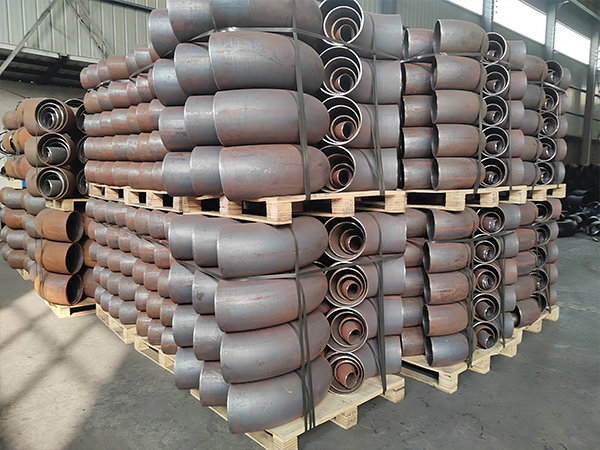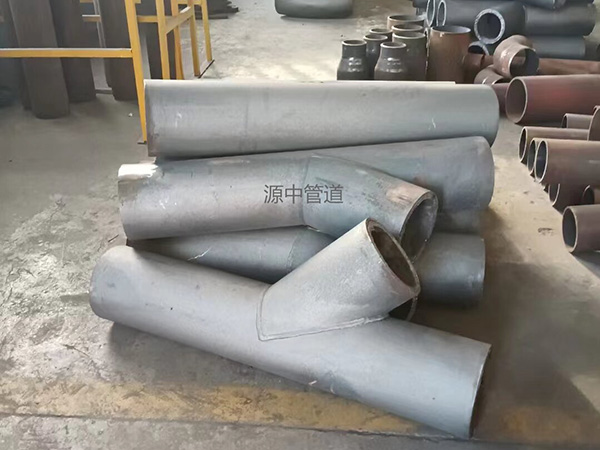NewsDetails
A Complete Guide to the Core Technology and Manufacturing Processes of Wear-Resistant Ceramic Pipelines
author:Yuanzhong time:2025-09-15 19:08:57 Click:118
Wear-resistant ceramic pipelines are engineered components designed to transport highly abrasive materials,such as fly ash,mineral ores,tailings,and cement,in industries like mining,power generation,and chemical processing.Their superior service life compared to traditional steel pipes stems from the extreme hardness of the ceramic lining.
Core Technological Principle
The fundamental principle is simple:protect the structural steel pipe by lining it with a layer of a material much harder than the abrasive particles it will encounter.
Alumina(Al₂O₃)Ceramic:This is the most common material used.The key metric is alumina content,typically ranging from 92%to 99.5%.Higher alumina content translates to greater hardness and wear resistance but also increases brittleness and cost.
Hardness:Alumina ceramic has a Vickers hardness(Hv)of around 1500-1700,which is far superior to hardened steel(Hv~500-800).This hardness ensures that abrasive particles cannot easily gouge or cut the surface.
Impact Resistance:A critical challenge is balancing extreme wear resistance with sufficient toughness to withstand occasional impacts.This is addressed through material composition and the specific manufacturing process.
Major Manufacturing Processes(From Basic to Advanced)
There are several methods for manufacturing ceramic-lined pipes,each with its own advantages,limitations,and applications.
1.Inorganic Adhesive Bonding(SBM™-Sheet-Backed Mosaic)
This is a widely used method for creating a flexible yet robust ceramic armor.
Process:
Ceramic Tile Production:High-alumina ceramic tiles are pre-formed into small,typically hexagonal or square shapes and sintered at high temperatures.
Backing Sheet:These individual tiles are precisely arranged and bonded onto a flexible fiberglass cloth or mesh using a high-temperature inorganic adhesive.
Pipe Lining:The sheet of pre-assembled tiles is then inserted into the steel pipe.
Curing:A special high-strength inorganic adhesive is applied to the back of the sheet and the pipe's inner wall.The assembly is cured at a controlled temperature,creating a permanent bond between the ceramic,the backing sheet,and the steel pipe.
Key Technology:
Gap Control:The small,closely packed tiles create a mosaic effect.The fine gaps between tiles allow the liner to conform to slight curvatures and thermal expansion without cracking.
Impact Resistance:If an impact occurs,only a local tile might be damaged,preventing a catastrophic failure of the entire lining.Damaged tiles can be repaired in the field.
2.Composite Pipe Forming(SHS-Self-Propagating High-Temperature Synthesis)
Also known as thermite welding or centrifugal SHS,this process creates a true metallurgical bond.
Process:
Loading:A mixture of iron oxide(Fe₂O₃)powder,aluminum(Al)powder,and additives is placed inside a steel pipe.
Centrifugal Spinning:The pipe is mounted on a centrifuge and spun at high speed.
Ignition:One end of the pipe mixture is ignited.An exothermic thermite reaction propagates through the entire length of the pipe:Fe₂O₃+2Al→2Fe+Al₂O₃+Intense Heat.
Separation by Density:The centrifugal force causes the denser molten iron to be forced outward against the steel pipe wall,forming a metallurgical bond.The lighter,molten alumina ceramic solidifies on the inside,creating a seamless,pore-free ceramic layer.
Key Technology:
Metallurgical Bond:The bond between the ceramic and steel is extremely strong,allowing the pipe to withstand high temperatures and mechanical stress.
Seamless Lining:The resulting ceramic layer is continuous and has no joints,offering excellent resistance to erosion.
3.Centrifugal Casting(Thermosetting Process)
This process is used for smaller diameter pipes and fittings,creating a very dense and uniform ceramic layer.
Process:
Slurry Preparation:A slurry is made by mixing fine alumina ceramic powder with specialized resins and additives.
Centrifugal Casting:The slurry is poured into a horizontally spinning steel pipe.Centrifugal force spreads the slurry evenly along the inner wall.
Heating and Curing:The spinning pipe is heated.The heat cures the thermosetting resin,bonding the ceramic particles together and to the pipe wall.
Sintering(Optional):In some high-end processes,the pipe is heated to a much higher temperature to sinter the ceramic particles,creating an even stronger and more durable lining.
Key Technology:
Uniform Thickness:Centrifugal force ensures a perfectly even lining thickness,which is critical for consistent performance.
Density:The process results in a very low-porosity,dense ceramic structure.
4.Direct Sintering of Ceramic Tubes(Elbow&Special Fitting Method)
For complex shapes like elbows,tees,and reducers,where centrifugal methods are not feasible,a different approach is used.
Process:
Isostatic Pressing:Alumina powder is formed into a hollow tube or an elbow shape using cold isostatic pressing(CIP),which applies uniform pressure from all sides to create a"green"(unfired)body of consistent density.
Sintering:The green body is sintered in a high-temperature kiln,causing the ceramic particles to fuse into a hard,dense final product.
Assembly:The finished ceramic elbow or tube is then encased within a protective steel shell,and the gap is filled with a special grout or cement,such as high-temperature alumina cement.
 Recommended Products
Recommended Products
 Contact us
Contact us
—— Contact:Manager
—— Tel:+86 19833790008
—— Email:772878082@qq.com
—— Url:http://www.yuanzhongpipeline.com
—— Address:Pucheng Development Zone, Yanshan County, Hebei Province















